Table of Contents
Create Amigurumi Sheep an irresistibly soft and cuddly amigurumi sheep with this detailed pattern guide. Perfect for crocheters of all skill levels, this adorable lamb features a fuzzy textured body, sweet expression, and Amigurumi Sheep charming proportions that make it an ideal gift or decorative piece. Follow along as we walk through every step of crafting your own woolly friend from start to finish.
Introduction to Amigurumi Sheep Crochet
Amigurumi—the Japanese art of crocheting small stuffed toys—takes on a delightfully fluffy twist with this sheep pattern. What makes this project special is the combination of regular worsted weight yarn for the face and legs with textured eyelash yarn for the body, creating the perfect woolly effect. Whether you’re new to amigurumi or an experienced crocheter looking for a charming project, this sheep pattern offers both accessibility and satisfying results.
Essential Materials for Your Amigurumi Sheep
Before beginning your sheep project, gather these materials:
- Worsted weight yarn in cream, gray, brown, or your preferred color for the head and legs
- Eyelash yarn in white or cream (recommended: Bernat Pipsqueak in Whitey White)
- 4.0mm crochet hook (size G/6)
- 6.0mm safety eyes (or size of your preference)
- Polyester fiberfill stuffing
- Yarn needle
- Scissors
- Stitch markers
Understanding Amigurumi Sheep Terminology
Familiarize yourself with these standard abbreviations used throughout the pattern:
- sc – Single crochet: The fundamental stitch for amigurumi
- st/sts – Stitch/stitches: Refers to the individual crochet stitches
- sc inc – Single crochet increase: Creating two single crochets in one stitch
- sc dec – Single crochet decrease: Combining two stitches into one
- BLO – Back loop only: Working through just the back loop of each stitch
- Magic Ring: A technique to start crocheting in the round with no hole in the center
- ch – Chain: Creates a series of linked stitches
Creating Amigurumi Sheep Head
The head forms the foundation of your amigurumi sheep’s personality. Using your chosen worsted weight yarn:
- Create a magic ring and work 8 single crochets into the ring (8 stitches)
- Increase in each stitch around (16 stitches)
- Work [1 single crochet, increase] 8 times (24 stitches)
- Work [2 single crochets, increase] 8 times (32 stitches)
- Work [3 single crochets, increase] 8 times (40 stitches)
- Work [4 single crochets, increase] 8 times (48 stitches) 7-16. Work 10 rounds of 48 single crochets
Begin decreasing to shape the face: 17. Work [4 single crochets, decrease] 8 times (40 stitches) 18. Work [3 single crochets, decrease] 8 times (32 stitches)
Change to eyelash/furry yarn: 19. Work 32 single crochets 20. Work [2 single crochets, decrease] 8 times (24 stitches) 21. Work [1 single crochet, decrease] 8 times (16 stitches) 22. Decrease in each stitch around (8 stitches)
Insert the safety eyes between rounds 12-14, positioned approximately 6-8 stitches apart. Add stuffing firmly before closing the head by pulling the yarn tail through the remaining stitches.
Crafting Amigurumi Sheep Ears
The ears add character and dimension to your sheep. Make two identical ears using worsted weight yarn:
- Chain 7, then working into the second chain from the hook, work 1 single crochet and 5 more single crochets along the chain
- Continue to the opposite side of the chain and work 6 single crochets (12 stitches total) 3-8. Work 6 rounds of 12 single crochets, working in continuous rounds without joining
Fasten off, leaving a tail for sewing. Fold each ear in half and sew the edges together to create a three-dimensional shape. Attach the ears to the head at the point where the regular yarn meets the furry yarn.
Forming the Fluffy Amigurumi Sheep Body
The body creates the distinctive woolly appearance of your sheep. Using eyelash/furry yarn:
- Create a magic ring and work 8 single crochets into the ring (8 stitches)
- Increase in each stitch around (16 stitches)
- Work [increase, 1 single crochet] 8 times (24 stitches)
- Work [increase, 2 single crochets] 8 times (32 stitches) 5-13. Work 9 rounds of 32 single crochets
- Work [decrease, 2 single crochets] 8 times (24 stitches)
- Work [decrease, 1 single crochet] 8 times (16 stitches)
Stuff the body firmly with polyester fiberfill: 16. Decrease in each stitch around (8 stitches)
Fasten off, leaving a long tail for attaching the head to the body.
Creating the Sheep Legs
The legs provide stability and complete the sheep’s silhouette. Make four identical legs using worsted weight yarn:
- Create a magic ring and work 10 single crochets into the ring (10 stitches)
- Increase in each stitch around (20 stitches)
- Work 20 single crochets in the back loops only (creates a visible ridge for the hoof) 4-8. Work 5 rounds of 20 single crochets
- Work [8 single crochets, decrease] 2 times (18 stitches)
- Work [7 single crochets, decrease] 2 times (16 stitches)
- Work [6 single crochets, decrease] 2 times (14 stitches)
- Work [5 single crochets, decrease] 2 times (12 stitches)
Fasten off, leaving a tail for sewing. Stuff each leg firmly, then fold the top in half and sew the edges together to create a flat surface for attaching to the body.
Assembly Instructions
Now that you’ve created all components, it’s time to assemble your amigurumi sheep:
- Head and Body:
- Position the head on top of the body with the face pointing forward
- Using the long tail left from the body, sew the head securely to the body
- Ensure the join is strong and hidden within the furry texture
- Ears:
- Position the folded ears on either side of the head at the junction where the regular yarn meets the furry yarn
- Sew securely in place, angling them slightly to give your sheep character
- Legs:
- Position the four legs evenly under the body
- The flat folded top of each leg should be aligned with the bottom of the body
- Sew each leg securely in place, ensuring they’re positioned to allow the sheep to stand
- Final Touches:
- Check that all parts are firmly attached
- Trim any excess fuzzy yarn if needed to shape the sheep
- Add any additional embellishments (like a small bell or bow) if desired
Working with Eyelash Yarn
Eyelash or furry yarn creates the perfect woolly texture for your sheep but can be challenging to work with. Here are some helpful tips:
- Feel Your Stitches: Since it’s difficult to see individual stitches in fuzzy yarn, use your fingers to feel for stitch placement
- Count Carefully: Keep track of your stitch count by counting aloud or using multiple stitch markers
- Use a Larger Hook: If you’re struggling with the fuzzy yarn, you can go up a hook size for those sections
- Maintain Tension: Eyelash yarn tends to be slippery, so maintain consistent tension to keep your stitches even
- Work Slowly: Take your time with the fuzzy sections; rushing can lead to missed or extra stitches
Understanding Round Progression
The round progression in this amigurumi sheep follows specific patterns that create the perfect shape:
Head Shaping Technique
The head uses a larger number of starting stitches (8 instead of the typical 6) to create a wider, rounder face:
- Expansion Phase (Rounds 1-6):
- Rounds follow the standard increase pattern of adding 8 stitches per round
- This creates a rounded shape that expands from 8 to 48 stitches
- The head reaches its maximum width at round 6
- Straight Section (Rounds 7-16):
- Ten consecutive rounds without increases or decreases
- This extended straight section creates the depth needed for the sheep’s face
- The length of this section gives enough room for eye placement
- Face Shaping (Rounds 17-18):
- Two rounds of regular yarn decreases shape the face
- Decreases are evenly distributed for a smooth, rounded appearance
- Wool Transition (Rounds 19-22):
- The transition to eyelash yarn happens after reaching 32 stitches
- This strategic change creates the illusion that the woolly body extends partially onto the head
- Final decreases using fuzzy yarn complete the head and hide the closing stitches
Body Construction
The body uses a simple dome structure that tapers at the bottom:
- Expansion (Rounds 1-4): Creates the rounded top of the body
- Straight Section (Rounds 5-13): Creates height and volume
- Shaping (Rounds 14-16): Decreases to create a tapered bottom for attaching legs
Leg Structure
The legs use a cylindrical structure with a special toe detail:
- Hoof Detail (Round 3): The back loop only technique creates a visible ridge representing the hoof
- Straight Section (Rounds 4-8): Creates the leg height
- Tapering (Rounds 9-12): Gradual decreases shape the top of the leg for easy attachment
Customization Ideas
Make your amigurumi sheep uniquely yours with these creative variations:
Color Choices
- Natural Sheep: Use cream or white furry yarn with gray, brown, or black face/legs
- Colorful Sheep: Create a rainbow sheep with colorful furry yarn and contrasting face/legs
- Black Sheep: Use black furry yarn with white face for a classic “black sheep” look
Size Variations
- Giant Sheep: Use chunky yarn and a larger hook for a jumbo version
- Mini Sheep: Use fine yarn and a smaller hook for a tiny pocket-sized sheep
- Sheep Family: Create sheep in multiple sizes to form a family group
Decorative Elements
- Flower Crown: Add small crocheted flowers around one ear
- Scarf or Bow: Add a simple scarf or bow around the neck
- Bell: Attach a small bell for a tinkling sound when moved
Textural Variations
- Super Fluffy: Use extra fluffy yarn like Bernat Boa for maximum fuzziness
- Loopy Texture: Use loop yarn for a different kind of woolly texture
- Curly Sheep: Use boucle yarn for a curly wool appearance
Troubleshooting Common Issues
If you encounter problems during your project:
Difficulty Seeing Stitches in Fuzzy Yarn
- Use a contrasting stitch marker to mark the first stitch of each round
- Feel for stitches with your fingertips rather than relying on sight
- Work in good lighting, preferably natural daylight
Uneven Shape
- Count stitches at the end of each round
- Use stitch markers to divide rounds into sections (e.g., place a marker every 8 stitches)
- Maintain consistent tension, especially when transitioning between yarn types
Difficulty Standing
- Check that legs are evenly positioned and the same length
- Stuff legs firmly, especially at the bottom
- Ensure the body has a flat enough bottom surface
Gaps Between Parts
- Use matching yarn for sewing parts together
- Take smaller, closer stitches when joining components
- Double-check that parts are aligned correctly before securing
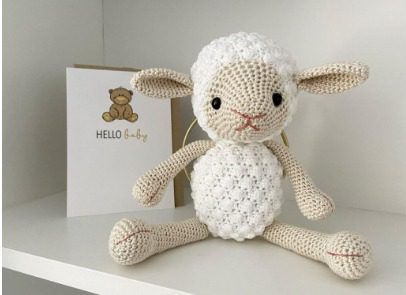
Check this out :Crochet a Woodland Fox Amigurumi
Conclusion
Creating this amigurumi sheep combines fundamental crochet techniques with the special skill of working with textured yarn. The result is an adorably wooly friend with personality and charm. The pattern teaches valuable skills in creating three-dimensional forms, working with challenging yarns, and assembling multiple components into a cohesive character.
Your finished sheep makes a perfect gift for children or a delightful decoration for your home. The textural contrast between the smooth face and legs and the fluffy body creates visual interest and irresistible touchability that appeals to crafters and recipients alike.
The techniques mastered in this project—including magic ring, increasing and decreasing in patterns, working with textured yarn, and assembly—build a strong foundation for tackling more complex amigurumi designs. Each sheep you create will have its own unique personality based on your tension, color choices, and the small variations that make handmade items so special.
Remember that amigurumi is both a craft and an art form—feel free to experiment with colors, proportions, and embellishments to make each sheep uniquely yours. Your handcrafted sheep represents not just a toy but a labor of love that showcases your creativity and developing crochet skills.
If you share photos of your finished sheep on social media, consider tagging the original pattern creator to show appreciation for their design. Happy crocheting!


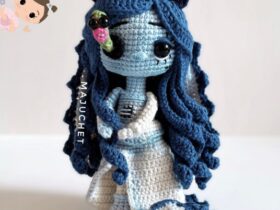
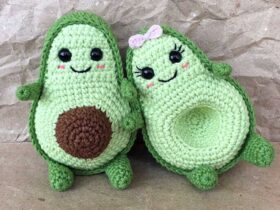
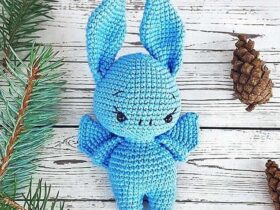
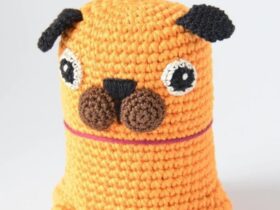
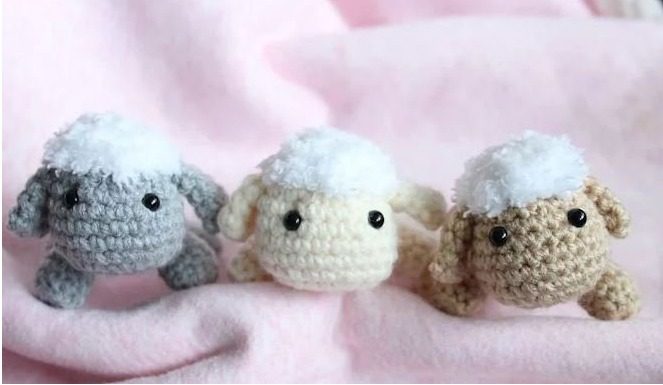
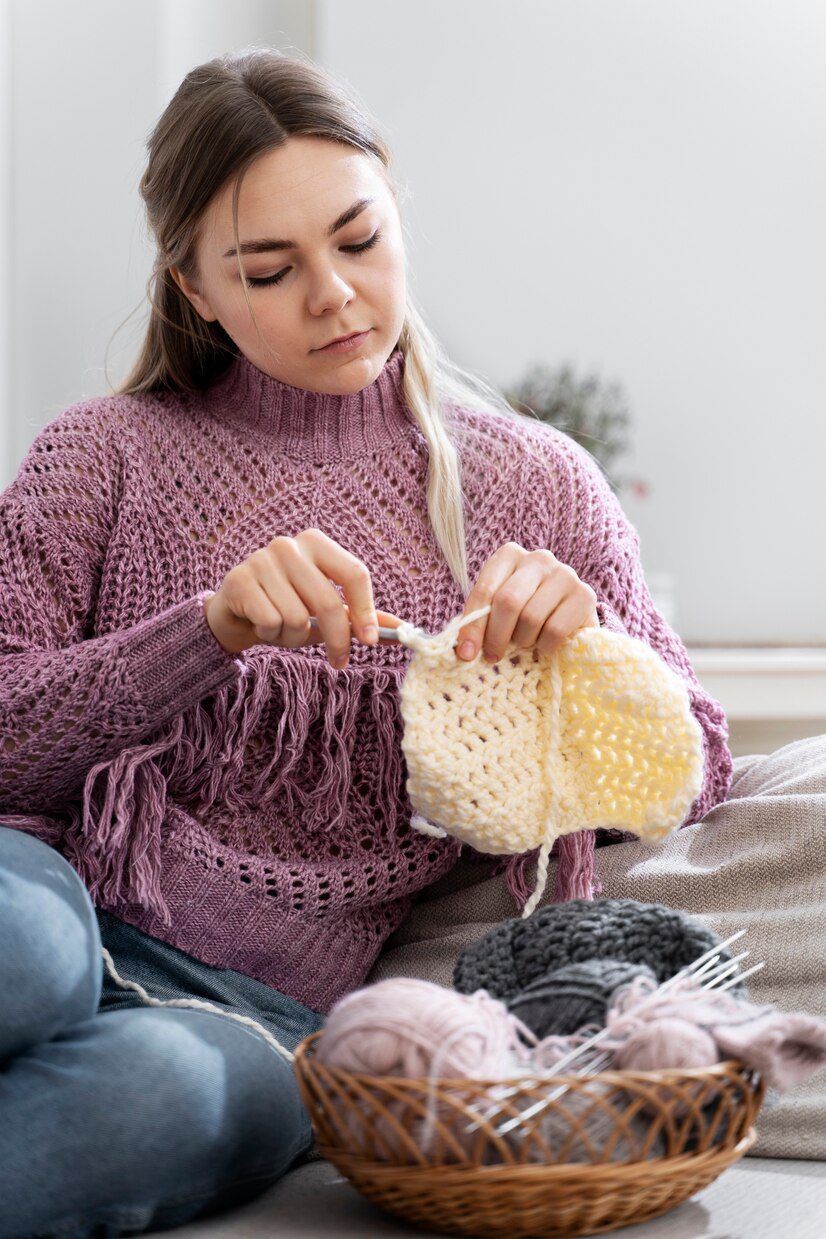

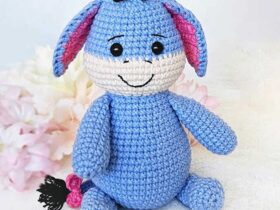
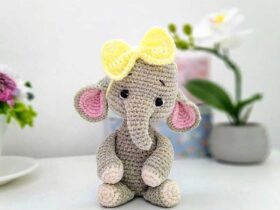
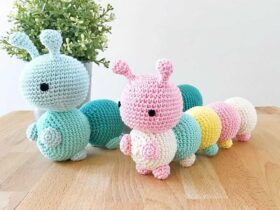
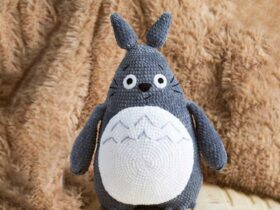
Leave a Reply